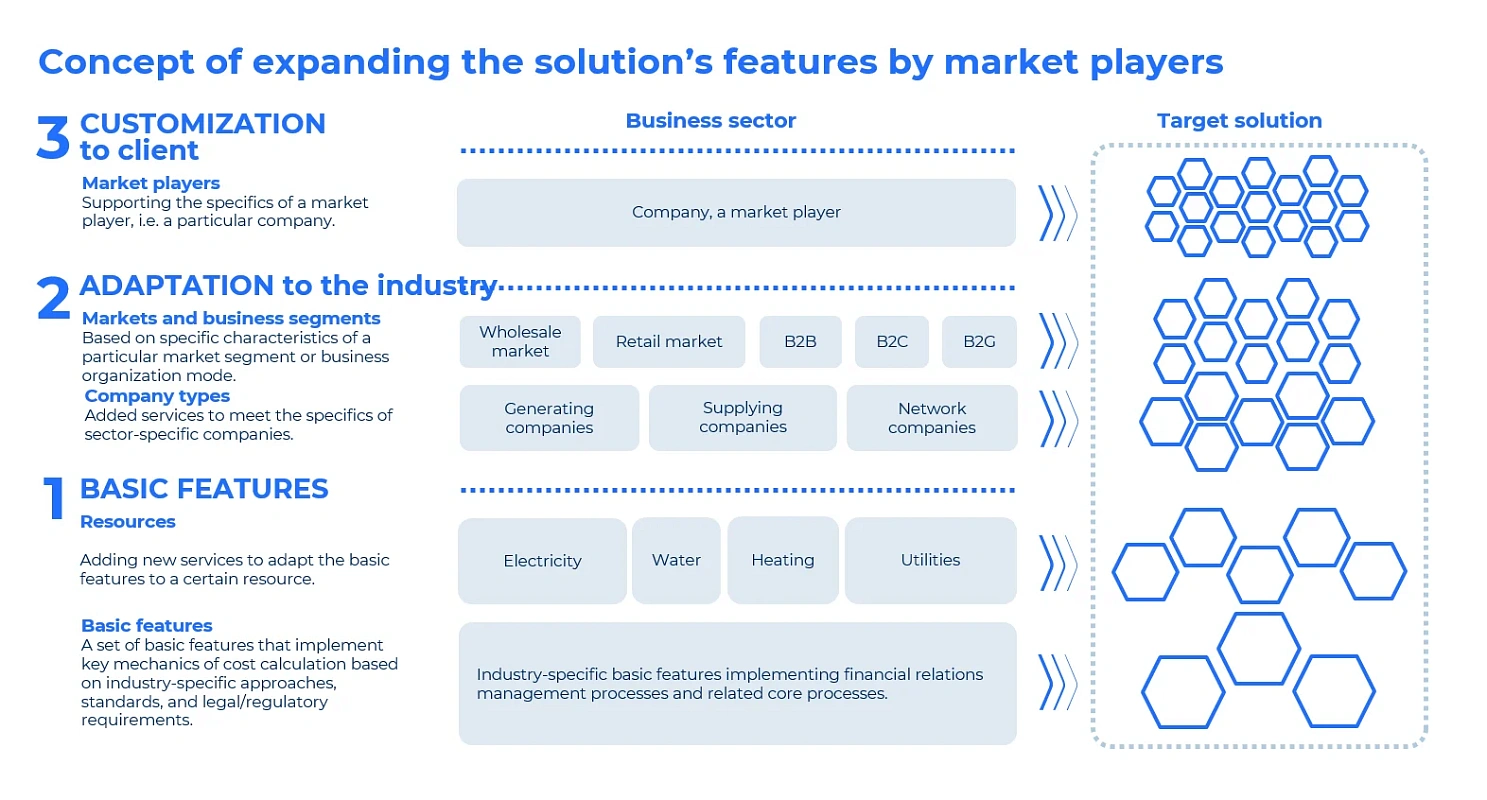
In November, HIP Bercut platform received the CNews Awards 2022 in the special category “ Ecosystem Building Product of the Year”. In his acceptance speech, Bercut CEO Andrey Bogdanov noted the strategic importance of platform products for the future of digitization. Let’s find out how exactly IT platforms can be helpful to businesses and what digitization trends will be the most important in the Russian market in 2023.
Andrey, what is your assessment of the impact of global conditions on the development of digitization, and how exactly can IT platforms benefit Russian businesses?
Global policy, economic turmoil and pandemic have impacted the pace of digitization around the world. Meanwhile, sanctions on Russian companies and the withdrawal of foreign IT vendors from the market are forcing companies to restructure their business models and make rapid adjustments to their current strategies. However, the biggest concern at the moment is how to adapt their IT environment, which has taken years to build, to ensure stable operation and further development of digital products under the current conditions and within tight timeframes. Platform products are exactly the answer to this demand. In particular, HIP Bercut, a hybrid integration platform.
“I am absolutely convinced that in the coming years, the majority of business tasks will be solved using platform products. This will accelerate and facilitate processes, allowing us to concentrate on the concept, rather than on the subtleties of its implementation”
Hybrid Integration Platform (HIP) is a tool for creating complex, highly loaded products using a modern approach to designing and developing IT solutions, which we at Bercut call a multi-tier IT environment. A platform is what helps companies to easily adapt to new market conditions and enable quick functional extensions to meet specific business needs.
What is Multi-tier IT Environment?
The architecture of a complex technology product consists of several tiers, or levels, each adding a certain business value.
Tier one. Basic Features.
It is defined by a basic component that satisfies the core principles of the industry (approaches, standards, legal requirements, etc.). At this level we form an abstract universal model of business objects, define the basic features of the system, e.g. charging, resource accounting. At the same time, we define infrastructure mechanics for maintaining security (SSO, data access control, secure infrastructure), integration landscape, and data management systems.
Tier Two. Adaptation
Based on the basic features and using low-code tools, we create new industry-specific features out of pre-built modules (microservices) ⎯ to customize the solution to meet the needs of a specific industry.
Tier Three. Customization
Having an elastic customization level allows you to quickly modify the solution, adapting it to the tasks of a particular company.

All solutions represent a set of features of a certain system; when designing any complex IT product, we must think at what level we will implement it and which components may be reused in future (e.g. for developing other solutions in different industries).
Andrey, so the platform is equipped with low-code tools? Can we say it is a low-code platform?
The distinctive characteristic of the Bercut Hybrid Integration Platform is that its purpose is not limited to integration or automation of business processes. As well as methods of product development on the platform are not limited only to low-code or pro-coding. The hybrid nature of the platform means that it enables three simultaneous approaches to creating complex IT products: no-code, low-code, and pro-code.
Complex, unstructured and highly specific tasks will require engaging highly qualified staff and the classic method of professional coding. However, more standard tasks that can be classified into patterns and arranged in systems do not require the highest level of skills. They can be accomplished with other generally available resources and methods, by junior and middle developers, analysts, product managers, or marketers. So, not only highly qualified IT specialists can create new digital products on the platform, but also business users, the so called civic developers.
Can you tell more about the product that received the award “Ecosystem Building Product of the Year” at CNews Awards 2022?
The case that earned Bercut an award in a special category is a product we have designed for Rostelecom ⎯ product hypotheses testing laboratory on the basis of HIP Bercut platform. It combines only two approaches, low-code and pro-code. This resulted in improved business performance, operational efficiency and ROI. The benefit for the company is that it now invests in proven hypotheses, with a shorter time to market of the finished products. This enables Rostelecom to quickly secure itself in a new segment by launching the right product at the right time. From the financial point of view, the approach has improved the launch costs by an average of 30 %.
What, in your opinion, is the key driver for companies to implement modern IT platforms, and what is the main barrier?
Businesses need more and more digital products, more features, and as quickly as possible. This results in a rapidly expanding range of IT demands, with higher requirements for implementation rate. A classic development approach may not be sufficient to handle so many challenges from the industry, unlike the modern hybrid approach.
However, despite the demand from the government and the needs of the business, there are companies that are not ready to abandon the solutions they are accustomed to. It may come as a surprise to you, but one of the key factors hindering the upgrading of IT environment in companies is not the lack of adequate solutions on the market, but the classic reluctance to change. Obviously, companies that adopt this approach risk ending up far behind their more agile competitors at some point. Given the long process of transitioning to a modern IT environment, a company must not be too late in implementing it.
Many companies are considering open-source software as a development tool. Can this rival platforms like HIP Bercut?
Almost all companies have in-house developed software, which typically includes a variety of open-source tools. Comparing them, the key advantage of the HIP platform is the unification of systems and reduction of costs associated with their disparate nature. Until now, open-source solutions have been generally trusted and reliable, but due to the political context, the situation has changed dramatically. Open-source is increasingly becoming a tool for all kinds of attacks on companies’ infrastructure and theft of confidential data, as cybercriminals use vulnerabilities of open-source libraries. That’s why major companies seriously question the security of the open source.
When it comes to a business-critical, highly loaded service, you may face another problem ⎯ the fault tolerance threshold. Recently, at the initiative of our partner, we have tested one of the open-source products. We compared its performance with a similar component in the Bercut’s Hybrid Integration Platform. Both products were put under equal load. As the TPS gradually increased, the open-source product simply stopped responding at some point, unlike the HIP component.
Still, many IT teams are using such solutions and want to keep this option open. The question remains: who takes the risks and responsibility for the security of using open-source? Developers of open-source software are numerous, meaning that every release and every change must be tracked. Unlike other platforms built on the open-source solutions, HIP Bercut is designed to offer a secure alternative to popular products, and more. If a company operates a familiar open-source solution, is confident in it and not ready to give up, e.g. Apache Kafka, Grafana or other similar products, Bercut can not only integrate with that product, but also provide its full features on HIP.
Which industries can apply Bercut’s experience?
Many industries are now in search of an experienced and reliable technology partner, but some are most dependent on foreign software, including fintech, large industrial enterprises, and retail. By some estimates, many businesses of these sectors use at least 50 % foreign solutions in their IT environment.
Looking for a substitute without any experience of the Russian IT market is quite difficult, so Bercut strives to provide all possible support to such companies. For example, we are currently working with partners on a complex integration project at one of the country’s major industrial enterprises, and we expect that its successful practice will be adopted by other companies in the industry. Banks will also need to transit to domestic software in the near future, otherwise they risk facing failures in the light of discontinued support and updates. Bercut’s experience in creating new-generation automated billing systems for the telecom segment, as well as products related to the banking segment, will ensure not only the stable operation of IT solutions, but also continued development of digital products. We invite retailers to implement an import substitution project by switching from foreign solutions of interaction with partners to the domestic hybrid integration platform by Bercut.
The HIP Bercut platform, as a seamless transition to a new technology stack, has the potential in many industries, thereby relieving big companies of the need to replace their entire IT environment overnight. You will be able to see and assess the solution’s robustness, as well as understand the benefits of the hybrid approach to developing new digital products during the implementation process.

